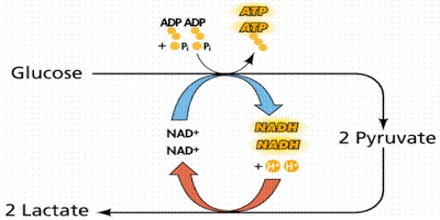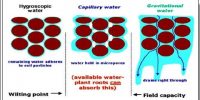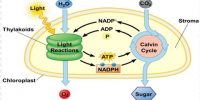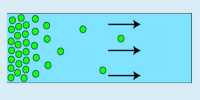Anaerobic respiration:
The respiration which occurs in absence oxygen is known as anaerobic respiration. It occurs in some yeasts and bacteria and in muscle when exercise is strenuous and there is not enough oxygen.
Different steps: Anaerobic respiration takes place in two steps; such as-
- Glycolysis
- Incomplete oxidation of pyruvic acid
Glycolysis: This process is same as the glucolysis of aerobic respiration. In this process one molecule of glucose is broken down into two molecules of pyruvic acid through a series of reactions.
Incomplete oxidation of pyruvic acid: In this process, pyruvic acid is incompletely oxidized to form ethanol and carbon dioxide or lactic acid only.
Formation of ethanol: It occurs in two steps-
In the first step, pyruvic acid is converted to acetaldehyde by the activity of carboxylase enzyme. One molecule of CO2; is also formed in this process.
CH3CO-COOH (pyruvic acid) → (carbonoxylase) → CH3-CHO (acetaldehyde)
In the second step, acetaldehyde is converted to ethanol by receiving two hydrogen atoms from NADH + H+ in presence of the enzyme dehydrogenase.
CH3 – CHO (acetaldehyde) → dehydrogenase → CH3 – CH2 – OH (Ethanol)
The NADH + H+ which was produced in the glucolysis of anaerobic respiration is used in this case. Now, only two stored ATP which were formed in the glucolysis are the only source of energy source in the anaerobic respiration. Ultimately form these two ATP 7.3×2 = 14.6 energy is formed.















